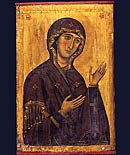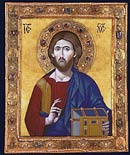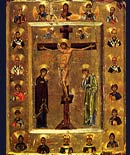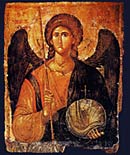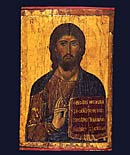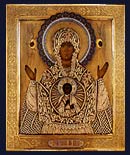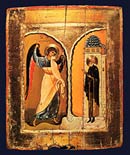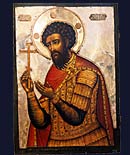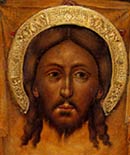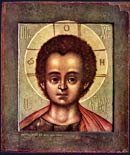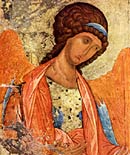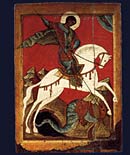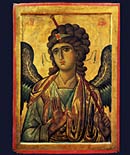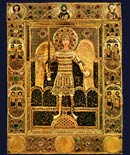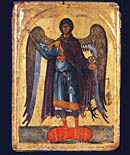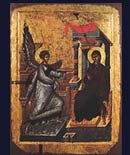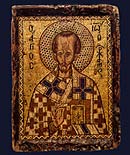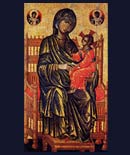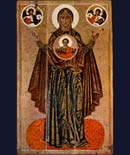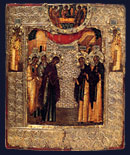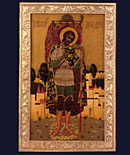How Ikons Are Created - Pigments and Brushes
You selection of pigments and brushes are very important. Brushes must be soft and generally round. You will need a number of fine detail brushes. Watch for the points of your brushes when you buy them. Cheap, poorly made brushes can come apart while you are painting and spoil your work. Sable is best, but some synthetic brushes will work okay for the budget-minded.
Traditional ikons are painted in egg tempera, and in very early-times were also painted in wax colors manipulated with heated rods and spatulas. Acrylic and oils paints are not traditional media for ikon painting, but there is no hard fast rule against these mediums. It is impossible to achieve the effect of egg tempera in other medium. The use of acrylic paints for ikons is fairly wide spread because it is an easier technique and supplies are easier to obtain. New students of ikon painting should move directly to original methods and avoid the interim step of painting in acrylics on canvas which can teach bad habits. This is not to say that acrylic painted ikons aren't spiritual. All ikons are simply nothing but painted boards and have no intrinsic spiritual value in their materials.
Two companies in Britain, Rowney and Windsor-Newton, carry egg tempera paints premade in tubes, but these are not true egg tempera paints, as they include oils in their composition and are very difficult for the ikon painter to use. The ancient egg tempera method uses dry pigments which you mix with the medium each time you use them. This might seem intimidating to the novice, but it is quite easy. Egg tempera is also easy to clean up.
Selecting the right pigments is very important. The traditional ikon palate is based on natural elements and is much cooler than the paints found for sale in art stores. You will find that natural pigments will harmonize within your composition in a way that mass-produced, synthetic paints never can. I suggest the following pigments for the beginning ikon painter; Green Earth, Burnt Sienna, Burnt Umber, French Ochre, Slate Grey, Ivory Black, Hematite, and Ultramarine Blue. All of these will cost a total of around $40 and come in 50 and 100 gram glass bottles from Sinopia. These quantities will last a long time for the novice painter. I also recommend buying Titanium White over old Flake White, which is lead-based and a hazardous material. Plus, I find Titanium White has stronger tinting qualities. A rich blue for traditional ikon backgrounds and the robes of the Virgin and Christ is recommended. Here, I suggest Cobalt Blues over Lapis-Lazuli colors, which are extremely expensive. Dark Cobalt Blue comes closest to the color used by Giotto for the backgrounds of his work. Reds are also a special case. Cinnabar, which is the genuine color of Vermilion, is best, but expensive. Ikon painters who want to achieve the rich, bright reds of Russian painting must use Cinnabar. Sinopia carries some alternative pigments, such as Permanent Red, which will work well.
Greens were always a problematic color for ancient and medieval painters and were normally based on impermanent vegetable dyes or minerals like malachite and copper. I suggest a Cobalt Green be added to the range of your pigments. The last pigments I have recommended, Cobalt Blue, Cinnabar and Cobalt Green will cost about another $70, but as I mentioned earlier, should last a long time.
For more details on pigments I suggest contacting Sinopia, they are very helpful in recommending colors and have a catalog they can send you in the mail.
Request a quote on a painting seen on this page or a new commission from Bob Atchison, click here
Next chapter: About the Egg Tempera Media
